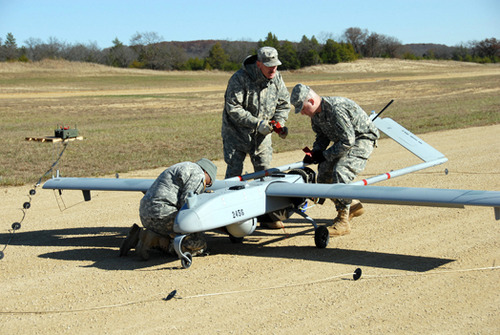For those with an interest in the domestic use of drones, the Congressional Research Service has released a pretty good summary and overview of the various “far-reaching” privacy issues that are emerging. (Get the PDF via FAS.org).

“While individuals can expect substantial protections against warrantless government intrusions into their homes, the Fourth Amendment offers less robust restrictions upon government surveillance occurring in public places and perhaps even less in areas immediately outside the home, such as in driveways or backyards,” the report says. “Concomitantly, as technology advances, the contours of what is reasonable under the Fourth Amendment may adjust as people’s expectations of privacy evolve.”
It concludes:
Currently, there is a vast body of Fourth Amendment law that governs the circumstances in which law enforcement must obtain a warrant before conducting surveillance. However, the sheer sophistication of drone technology and the sensors they can carry may remove drones from this traditional Fourth Amendment framework. Beyond the courts and the Constitution, what role should Congress and the President play in regulating the introduction of drones inside the United States? As the integration of drones for domestic surveillance operations quickly accelerates, these questions and others will be posed to the American people and their political leaders
Photo: Illinois National Guard via Medill Reports.



